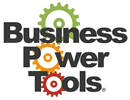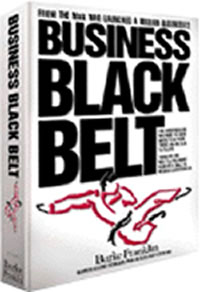Acronyms… Abbreviations or Abominations?
I was walking by an office where they were having a raging party — I had to come in and see who they were and what they were celebrating. LOA Magazine (What was LOA?) “L.O.A.” in huge letters across the front, no definition of “LOA” anywhere. We know that “assume” is an acronym for making an “ass” out of “u” and “me” so I wasn’t to quick to think I knew what they were talking about. Nevertheless, before asking anyone, I casually tried to find out what it meant on my own by looking through a copy of the magazine, looking around the office, listening to conversations (they all just said, “LOA”)… Finally, I asked and the nice woman responded incredulously that of course it meant, “Law of Attraction!” Oh! Silly me, I should have known…
Search “Acronyms LOA” and you’ll get about 36 options (for example, a sailor might presume “length overall”). While everyone there knew what it meant, how does a newcomer (possibly interested in becoming customer or subscriber) quickly grasp the concept? Often we don’t. Bye bye.
Recently I’ve received several emails promoting OTO and how it can help me. My problem is I really didn’t know what OTO means. I could assume… To Internet marketers, it means “one time offer.” (or some kind of OT Optimization.) To the folks at Oracle, it means “Oracle Training and Optimization.” Search “OTO” and you’ll get 52 possibilities! Or, you could just assume…
Have you heard of this? “97% of firms utilizing ABM report higher ROI compared to traditional marketing. The upfront investment might be steep, but the payoff with an ABM strategy can be substantial.” (I think we all know what ROI means, but Account-Based Marketing, who knew?)
The point is that if you want people to immediately understand what you’re offering, what you are talking about, it’s best to include the acronym spelled-out somewhere at the beginning.
L. Ron Hubbard in his pre-Scientology book, Dianetics, asserts that when you come across a word that you do not know the meaning of, if you do not look it up and just try to keep reading, assuming the context will take care of itself, you will actually not absorb anything on the rest of the page. If that’s true, what becomes of all your brilliant sales copy after an undefined acronym (or mistakenly assumed one)?
Unable to properly determine the meaning of OTO, I found myself at the effective of exactly what L. Ron Hubbard was talking about. I had no idea what this marketing piece was trying to sell me. It seemed very compelling for… something. Given our 8-second attention spans these days, that promo was toast.
Acronyms as company names
In the must-read marketing book “Positioning: The Battle for Your Mind” by Al Ries & Jack Trout, they put forth an entire chapter on the woes of naming or referring to your company with an acronym — unless you have 50 years of International Business Machines or American Telephone & Telegraph, you must be very careful before referring to your organization as IBM or AT&T. Often the acronyms are customer-driven, like FedEx. At least that retains some semblance of the original name. Even then, if they went all the way to “FE”, how would that sound and carry the brand?!?
I could refer to my own company as BPT which stands for Business Power Tools. So, if you’re building a business, Business Power Tools might resonate as useful. On the other hand, no matter what you’re doing, “BPT” makes absolutely no lasting impact whatsoever. Therefore, branding with initials or an acronym is very risky business — you can be lost into obscurity immediately.
Business Power Tools offers hundreds of software-based business templates and we have a system for filling in the blanks in many places. Sometimes we want to insert the company’s formal name (at the top of a contract, document, letterhead or spreadsheet) and then insert an informal name or acronym again that can be repeated over and over throughout the document. For example in a legal contract, the example we give subscribers is “Ford Motor Company, Inc.” as the formal company name, and, in the next form field, we recommend it shortened to just, “Ford” (vs. “FMC”). FMC doesn’t reinforce the name of the company, but Ford does. How can you follow that example in your documents and conversation?
Being mindful in business and all communications…
- Consider your audience when you use an acronym — does everyone reading or listening know what it means?
- Are you just trying to sound cool tossing around industry jargon?
- Or, is it more important to have your entire audience understand what you mean?
- And, if you’re the audience and you don’t know, it’s always a good question to ask, “What do you mean by [OTO]?”
- Otherwise, you will ass.u.me something… and we already know what that means!
Updated: Software Templates and
Business Development Platform

All of our content from 29 years of successful windows apps and experience remastered into a seamless cloud-based collaborative dashboard.
The apps, docs, templates, worksheets, and videos to organize, fund, run, and scale a company.
It’s designed for start-up founders, growing company leaders and the consultants who advise them.
If you are building or fixing companies…
Michael E. Gerber (E-Myth) called it,
“The customizable encyclopedia of everything you need to know about your business…
but were afraid to ask!”
- Profit from promoting it to your network
- Use it as a tool to engage and manage more clients
We actually have more than a thousand templates…
calculators (spreadsheets), documents (plans, policies, procedures, contracts, etc.), PPTs, etc.
And, we have many more docs and templates yet to be added!
It’s especially useful for start-ups transitioning to growing companies.
We’re looking for a few sophisticated business advisors to give
our next-generation Business Power Tools dashboard a test-drive.
So, if you’re doing any consulting…







